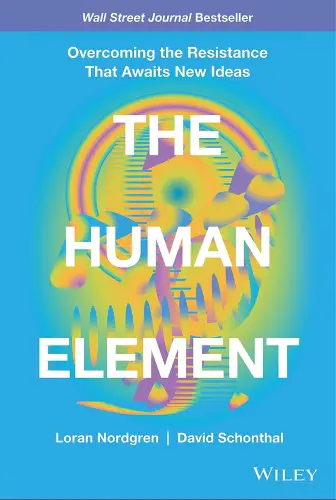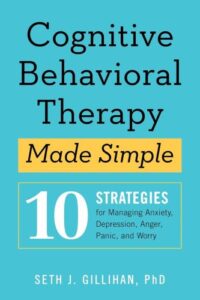The Human Element
Book Author: David Schonthal, Loran Nordgren
Summary reviewed by:
Terrence Timmons
Terrence Timmons
Analyst
Bachelor of Arts (BA), University Of California, Santa Barbara 2019
With over 4 years of experience as an analyst. Terrence Timmons is committed to analyzing summaries without compromising on quality.
The Human Element: Summary
Unlock your potential by understanding the obstacles within you, beckon David Schonthal and Loran Nordgren in "The Human Element". In this insightful work, the authors delve into the psychology of change, uncovering why efforts to change often fail and how to overcome these barriers effectively. Drawing on robust scientific research, including behavioral economics and psychology, Schonthal and Nordgren, both seasoned academics and practitioners at Northwestern University's Kellogg School of Management, bring authoritative perspectives to the subject.
The core thesis of the book is that personal and professional growth is often hindered not by external factors but by internal ones. These internal frictions can be more challenging to identify and address than external obstacles. The authors categorize these frictions into four main types: inertia, effort, emotion, and reactance, explaining how each plays a role in resistance to change.
The book is methodical in its approach to problem-solving and personal development. It rejects the notion of quick fixes, promoting instead a realistic and systematic strategy to identify and mitigate internal frictions. For example, to combat inertia, the authors suggest restructuring the environment to make new behaviors less daunting and more accessible.
To illustrate their points, Schonthal and Nordgren include a variety of case studies and examples from both the business world and personal scenarios. These examples not only illuminate the theoretical concepts discussed but also show how these strategies can be applied in real-life situations.
Moreover, "The Human Element" provides readers with practical tools and exercises designed to help them apply the book's concepts to their daily lives. These include self-assessment worksheets and decision-making frameworks that guide the reader through a process of self-reflection and action, aiming to reduce internal resistances and unlock personal growth.
Through their pragmatic and insightful approach, Schonthal and Nordgren offer a pathway to not only understanding the hidden forces that impede change but also mastering them to foster personal and professional development.
The Human Element: Genres
Non-fiction
Self-help
Business
Business Economics
Business Management
Business and Economics
Business Communication
Business Literature
Organizational Behavior
Psychology
The Human Element: Themes
Fuel-Based Mindset vs. Friction-Based Mindset: The former focuses on adding more features and benefits to make an idea attractive, while the latter emphasizes understanding and reducing barriers to adoption.
Inertia: The strong inclination to maintain the status quo. Overcoming this requires positioning the innovation as a minor adjustment to the usual, rather than a drastic shift. For instance, presenting an innovation as a slight tweak to business as usual can help reduce resistance.
Effort: The energy, whether real or perceived, needed to implement change. Demonstrating the ease of implementing a new approach and highlighting its high rewards versus low costs can mitigate this friction.
Emotion: The unintended negative feelings that arise from change. Ensuring that an innovation doesn’t pose a threat and actively reducing associated anxieties can help in alleviating this friction.
Reactance: The innate human tendency to resist change. Lowering reactance involves ensuring that individuals don’t feel forced into adopting an innovation. Building genuine interest and sparking curiosity about how the innovation performs can be more effective.
For instance, a furniture company couldn’t grasp why customers would design their own couch but then abandon the purchase. Initially, they thought adding more features would help. However, upon interacting with customers, they realized the friction was about what to do with their old couches. By offering a solution to pick up and donate old couches, they addressed the friction, leading to a surge in sales.
The Human Element: Methodology
In synthesizing the essence of "The Human Element," we embarked on a journey of expert analysis, focusing on the book's core themes such as resistance to change and the power of perception. Our team, equipped with a deep understanding of literature and psychology, extracted pivotal insights that not only inform but also inspire practical application. This approach allows us to bridge the knowledge gap, offering you, our reader, a concise yet profound summary that resonates with your curiosity and desire for actionable wisdom. Through meticulous review, we ensure the integrity and quality of our summaries, making them reliable guides in navigating the complexities of personal and professional growth.


The Human Element
Date Published: September 28, 2021
Disclaimer: As an Amazon Associate I earn from qualifying purchases.




